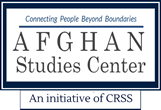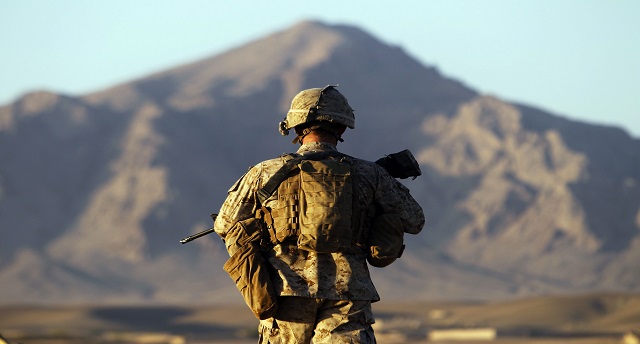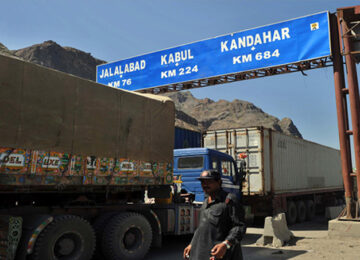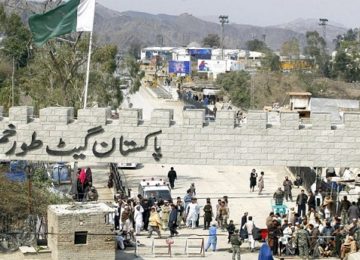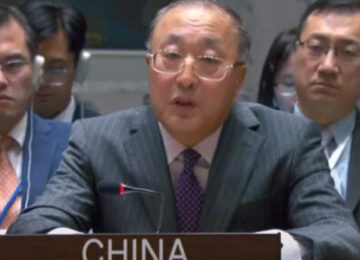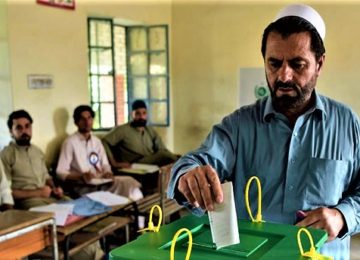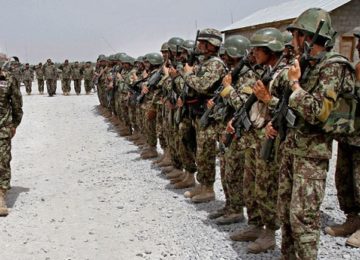It is time for America to end a militarized process that had its inception with the reaction to the Soviet invasion of Afghanistan decades ago.
As the United States enters its seventeenth annual fighting season in Afghanistan, the endgame seems no closer. America continues to try to club the Taliban into talking; they endeavor to expel us. America ratchets up financial coercion against Pakistan seeking fuller cooperation; Pakistan hedges its bets in facing existential threats. Since continuing violence in Afghanistan is inextricably intertwined with Pakistan, a “package deal” is necessary to close America’s military campaign in South Asia. Yet, agreement has proven elusive through multiple administrations, with recycled proposals failing.
America’s continuing commitment to force signals there will be no “walk away” this time, unlike Iraq. The Trump administration currently weighs harsher penalties on Pakistan to protect U.S. personnel and interests in the region. However, coercion alone will not end the fighting or bring security. The issue is how the alignment of force and circumstance facilitates pursuit of peace. The answer should yield our principles of action to achieve security.
Where Are We Now?
The starting point is acknowledgement that as long as our troops are there, which is indeterminate, violence will continue. After these many years of war, America must recognize that its military deployment continues to act as a force multiplier for the opposition. Likewise, while others think that America seeks to impose its governance and values on them, opposition will persist. U.S. efforts sustain the quagmire; they do not end it.
Complicating the exit strategy is a failure to communicate effectively what will permit the United States to leave Afghanistan. Pakistan still professes bewilderment at U.S. ultimate goals and strategy alike. There remains suspicion that America seeks a permanent base in Afghanistan. There also is concern the United States seeks to destabilize Pakistan to block China and theChinese-Pakistan Economic Corridor, including by its failure to restrain India from fermenting unrest in Baluchistan. In Pakistan, mistrust runs so deep some think we want to neutralize their nuclear deterrent through cyber manipulation.
Unifying clarity of purpose with deeds is needed to engage Pakistan as a necessary party to ending regional warfare. As surely as peace in Afghanistan has been impaired by Pakistan, it is equally assured that none will be made or endure without it. Yet, punitive measures alone, even with multilateral diplomatic pressure, will not promote peace without sufficient upside. “Feeding at the trough,” however, is another significant impediment to peace—facilitated by the U.S. mission based tasking of the Pakistani military. There was always more money for them, which incentivized prolonging the conflict.
Still, opportunity arises from several developments. First, the Federally Administered Tribal Areas (FATA) will merge into Khyber-Pakhtunkhwa (K-P) province. The Pakistani army’s control over fertilizer distribution to curb fueling IED attacks on allied troops across the border gave it the power of food over FATA’s populace. Piling that on top of Soviet style occupation, while imposing collective responsibility, had draconian effect. Public opinion over FATA’s future now tilts in favor of assimilation, providing political cover for consolidation once the population is deemed “ready.” Ethnic based civic unrestpercolates though as grievance visibly grows. Meanwhile, the militant “pressure cooker” releases steam westward to fight us in Afghanistan and eastward in Kashmir, while quieting FATA and K-P to help preserve peace in between in Punjab. That army “success” erodes the ISI’s “Islamic incubator” in FATA because of the blowback threat it engendered.
Second, the Taliban are feeling more “isolated” now, albeit some factions more than others. Financing is not as strong; money flowing from the Gulf slowed. The Taliban also has little positive to show society despite a prolonged commitment to fighting. These factors, coupled with a population desiring peace, may account for the Taliban not immediately rejecting a recent Afghan plan that offered little new.
Third, America’s financial constraints on Pakistan, including orchestrating another Financial Action Task Force clampdown, impels further slippage into China’s orbit. That is undesirable to Pakistan given the way China doles out its aid; the same is true with respect to Saudi financial dependency, even whensupportive. American aid remains a highly valued counterweight; constraints on it, properly calibrated, could soften adverse Pakistani positions despite mutual mistrust.
While these circumstances open the window for the ongoing peace initiative, how do we actually proceed to find common ground?
The Path Forward
An initial step will be creating a new monetary equation: instead of mission-based compensation fueling the appetite for dollars, future financial flow should be tied to achieving peace. The recalculation requires creating a near-term vision of what peace will bring, triggered by milestones for release of benefits, including the U.S. military exit. This organizing principle effectively reverses U.S. step-by-step practice by advancing to ultimate issue consideration first. It means America should ready a tangible vision of the peaceful future it will back with dollars, rather than pursue militarily until “prevailing” by some political definition.
The timing for such a proposal, through a “peace jirga”or otherwise, is to be guided by another principle of action—proper sequencing. To compromise Taliban support networks sufficiently to ripen peace’s appeal, America first needs to fix the price for ending Pakistan’s “double game.” Additional U.S. coercion may well set up that negotiation, but is unlikely to achieve it absent sufficient incentive. How would it be different this time, though, after tens of billion in aid have not secured it in the past?
The answer is that the negotiation is conducted in circumstances with greater risk. A halt in U.S. aid and the application of further sanctions are clear and present dangers; taken far enough they push Pakistan into becoming China’s de facto vassal. Pakistan’s dependency on U.S. military spare parts is another key point of vulnerability that could be threatened. Being outflanked on its western border by India is an ongoing threat. India’s increasing aid to Afghanistan, including militarily, ominously compromises Pakistan’s“strategic depth.” The real existential threat is less from Indian nucs than from new boundary lines being drawn, with American accommodation, through India’s support of Baluchistan independence, and Pukhtun unrest spiraling to erase the Durand line’s separating buffer. Punjab fear of being “Bangla Desh’d” again is a recurring nightmare.
A peace component that guarantees western boundaries is a meaningful enticement to Pakistan, helping it meet the continuing eastern threat and address internal inequities. In return, a Pakistan that does not risk its strategic interests at home and in Afghanistan, will more willingly work with us constructively to avoid an “Iraq withdrawal” repeat with respect to ISIS, or the next incarnation of transnational militancy from Af-Pak bases. A demarcation recognized by peace treaty provides Pakistan with the boundary Afghanistanstill refuses to accept. America’s guarantee, when linked to our limited security goal of preventing an enemy base, serves mutual security. Everything besides this zero tolerance U.S. goal is ultimately either conflation of means with end, collateral linkage, or “mission creep.” With President Trump’s goal redefinition in his speech last August, America’s additional security interests in the region were delinked by words, but not by deeds, including force projection; that divide is both a problem and a trading card for a solution.
The continuing perception of “imposed governance” that still fuels the “foreign invader” cycle of militant opposition, also allows existing supporters to resist compromise that threatens the privileges they enjoy without power sharing. America should remember President Kennedy’s cautionary admonition that it cannot send others the will to use arms we supply or to abide by democratic ideals. Adherence to this organizing principle requires American recognition that U.S. proxy does not have to rule Afghanistan to accomplish our core mission. Achieving peace in Afghanistan requires political inclusiveness; the U.S. price for Afghan self determination is effective self-policing.
That path may follow a devolution in power back to decentralized tribal orientation that prevailed historically. The tool to achieve it may be a variant on the Kissinger exit solution with North Vietnam, where a cease-fire in placerecognized the power of arms where it prevailed. If such an approach is taken in Afghanistan there are two challenges: (i) avoiding the resurrection of warlords, and (ii) further descent into civil war—like Vietnam and Yemen, which failed to disarm. Af-Pak needs to follow the model of post-civil war practice in the Balkans and Lebanon, where demobilizing militias traded arms for cash. They funded their political wings and social security networks, on which power in developing civil society is often based. The lesson of putting arms to “another use”—even if America pays to verifiably put them “beyond use”—must be applied on both sides of the Durand line. It also highlights the need for fair participation in a supervised electoral process not conducted at gunpoint.
The United States should acknowledge there is room for diversity not only in democratic participation, but also in societal values in South Asia. In Afghanistan and along Pakistan’s western frontier, the price of diversity is to recognize that changing core values is a matter for self determination. The U.S. security interest in the battle for hearts and minds there is a task better spread over a multigenerational educational process. America’s moral aim should be targeted at financial support for public/private education curriculum reform to help the people themselves shape the mindset of their next generations. The Soviets too viewed education, particularly women’s liberation, as a lynchpin for societal change. They sought to impose it for decades—and failed as a result in both Central and South Asia. America need recognize it has neither generations to impose its values nor the capacity to do so. As President Kennedy sagely observed: “the United States is neither omnipotent nor omniscient . . . we cannot right every wrong or reverse every adversity . . . there cannot be an American solution to every world problem.”
America’s educational approach could include support for preserving cultural heritage, for that of Pakistan actually reflects roots of tolerance in the past, compared with the imported version of Islam ascendent since the Soviet invasion. In the right circumstances, Pakistan’s madrassas could turn back from Gulf supported Wahhabism to their historic orientation toward the more moderate madrassas of India. After all, mullahs have financial concerns too, especially when the money pool is drying.
Still, the real “carrot” in the peacemaking process is the postwar aid plan, which the Unitede States controls. In the rural areas, America’s initial priority should be on physical infrastructure. In particular, the area is ripe for road construction to benefit the rural inhabitants, where even today donkey transport competes with overloaded motorbikes for passage on narrow dirt paths. Political/military control as well as commerce would benefit. Since the Pakistan Army or its foundations control much of the limited frontier road construction, increased funding for such projects provides the incentive of commercially reasonable profit from peace. Equally, that approach can exploit selective subcontracting, which is consistent with existing Army practice in the frontier. But it would require equitable opportunity to share in the benefits. Permitting more local concerns to profit while fueling substantial employment is a politically necessary condition for the contract awards process. This time the administration of aid must be effected through civilian authorities to enhance accountability and promote democracy by not compromising institutional governance.
Priorities for the population would include schools, housing and staffed health clinics — not just temporary facilities. Ample permanent construction projects would offer tangible social service results from peace. It also provides employment opportunity to replace militancy based compensation. During the transition period guarding still could be funded and, where necessary, “transit rights” payments made too. However, the market compensation for construction jobs should be higher to promote the societal status of those earning through peaceful occupations.
Another necessary component is enhanced administration of speedy and equitable justice. Historically, in rural areas local khans resolved problems quickly, or the people turned to a “jirga” of village elders. Both approaches remain rooted in the local culture, despite occasional abuses and Taliban efforts to eliminate those who would not apply their version of Islamic justice. Going forward there should still be room for traditional community-based dispute resolution practices to continue, but without the existing veto power of the Political Agents for the FATA. The end to legacy Frontier Crimes Regulations and “collective responsibility” under them is necessary. Relinquishment of such powers can be protectively insulated by early extension of a modernized civil juridical system to FATA, like that which is now being implemented in the Peshawar High Court. These steps would signal the necessary rapidity of political consolidation. The speedy and fair administration of justice would eliminate a vulnerability the Taliban long exploited along the frontier.
A concomitant part of the process could be American brokered reciprocal restraint of present artillery and other armed exchanges between Pakistan and India in Kashmir. If a ceasefire holds, the next confidence building measure would trade Indian covert actions in Baluchistan in return for Pakistan’s in Bangladesh, which allegedly seek to drive Muslim immigrants into India to upset the political balance in Assam province. The success of “conscious parallelism” through self-restraint would promote detente, as in the Cold War. Specific American aid could be contingent upon and promote the integrity of these informal processes.
U.S. interests are ultimately served by accelerating communication of what peace will bring to South Asia. The new approach would come at ebb tide in the funding flow to our opponents, helping to blunt Russian arms support. The human and economic cost will be lower than that of conflict. Aid can be structured to transition society from an arms-bearing living to one of trade and commerce, with tangible benefit to the Af-Pak Pukthun population. The United States can avoid the political mistake made in the Soviet/Afghan war of receiving no political credit, for sufficient pacification in the frontier permits “branding” efforts as U.S. sponsored—without necessarily placing a target on projects as before. Last, but not least, distraction from rising threats will diminish, enhancing our ability to devote freed assets to confront them; we would no longer be “stuck on the fly paper.”
Reduced to essentials, simplifying America’s goal and military exit strategy in Af-Pak, coupled with communicating the rewards that could accompany it in return for meeting America’s core security need, creates a potential path to peace that has been unknown in the region for two generations. It is time for America to end a militarized process that had its inception with the reaction to the Soviet invasion of Afghanistan decades ago. America is still cleaning up the legacy of the Cold War; it has both the responsibility and capacity to do so. All America really need is the political will to give peace a chance.
This article originally appeared on The National Interest on May 14, 2018. Original link.
Disclaimer: Views expressed on this blog are not necessarily endorsed or supported by the Center for Research and Security Studies, Islamabad.
